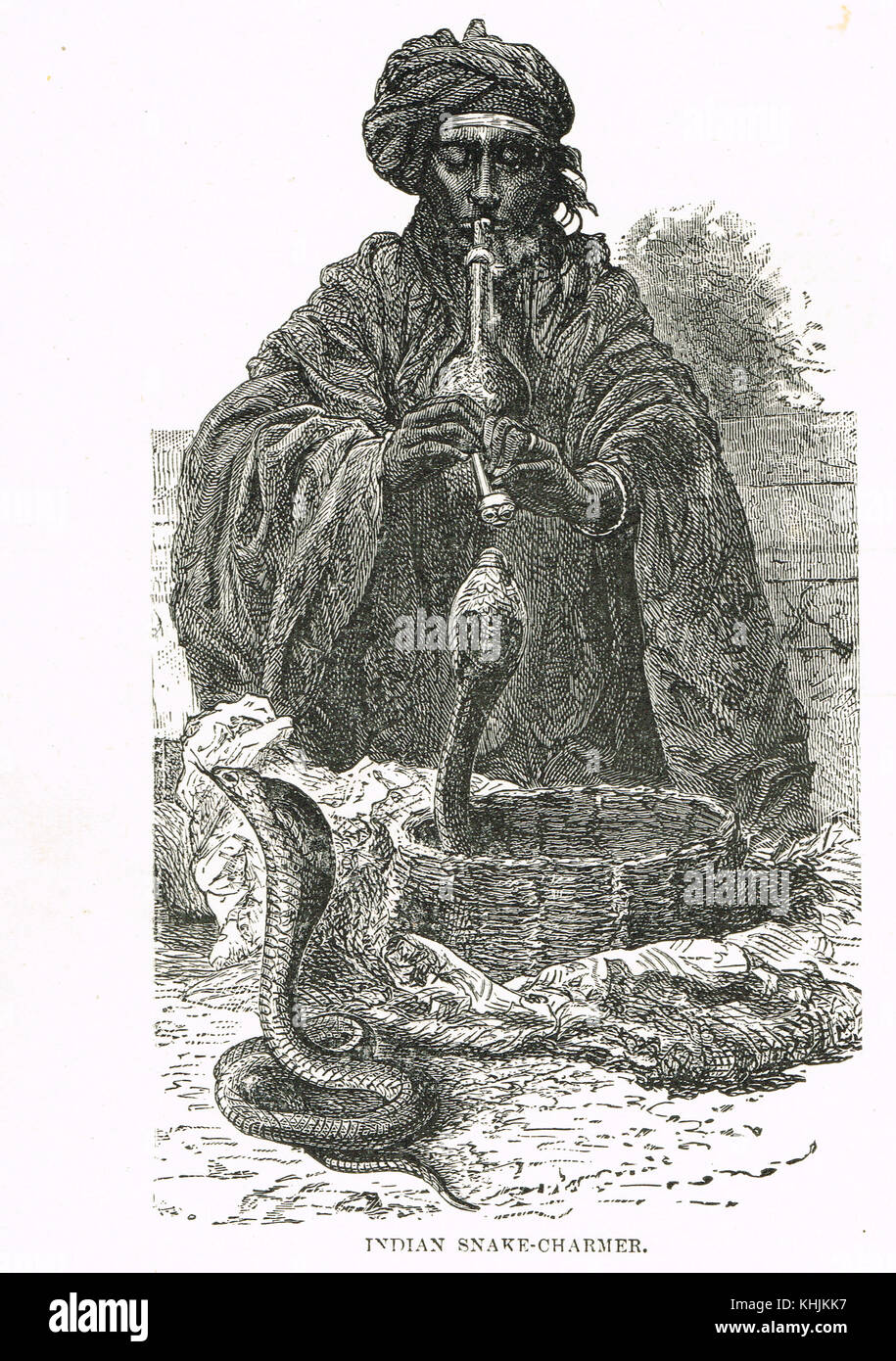An Indian Snake Charmer, 19th Century

Image details
Contributor:
Historical Images Archive / Alamy Stock PhotoImage ID:
KHJKK7File size:
19 MB (1.6 MB Compressed download)Releases:
Model - no | Property - noDo I need a release?Dimensions:
2164 x 3073 px | 18.3 x 26 cm | 7.2 x 10.2 inches | 300dpiDate taken:
1901More information:
This image could have imperfections as it’s either historical or reportage.
From Wonderland or Curiosities of Nature and Art published in 1901. Info from wiki: Snake charming is the practice of pretending to hypnotize a snake by playing an instrument called pungi or bansuri. Many snake charmers live a wandering existence, visiting towns and villages on market days and during festivals. With a few rare exceptions they make every effort to keep themselves from harm's way. The charmer typically sits out of biting range and the snake is sluggish and reluctant to attack anyway. More drastic means of protection include removing the creature's fangs or venom glands, or even sewing the snake's mouth shut. The most popular species are those native to the snake charmer's home region, typically various kinds of cobras, though vipers and other types are also used. Although snakes are able to sense sound, they lack the outer ear that would enable them to hear the music. They follow the pungi that the "snake charmer" holds with their hands. The snake considers the person and pungi a threat and responds to it as if it were a predator.